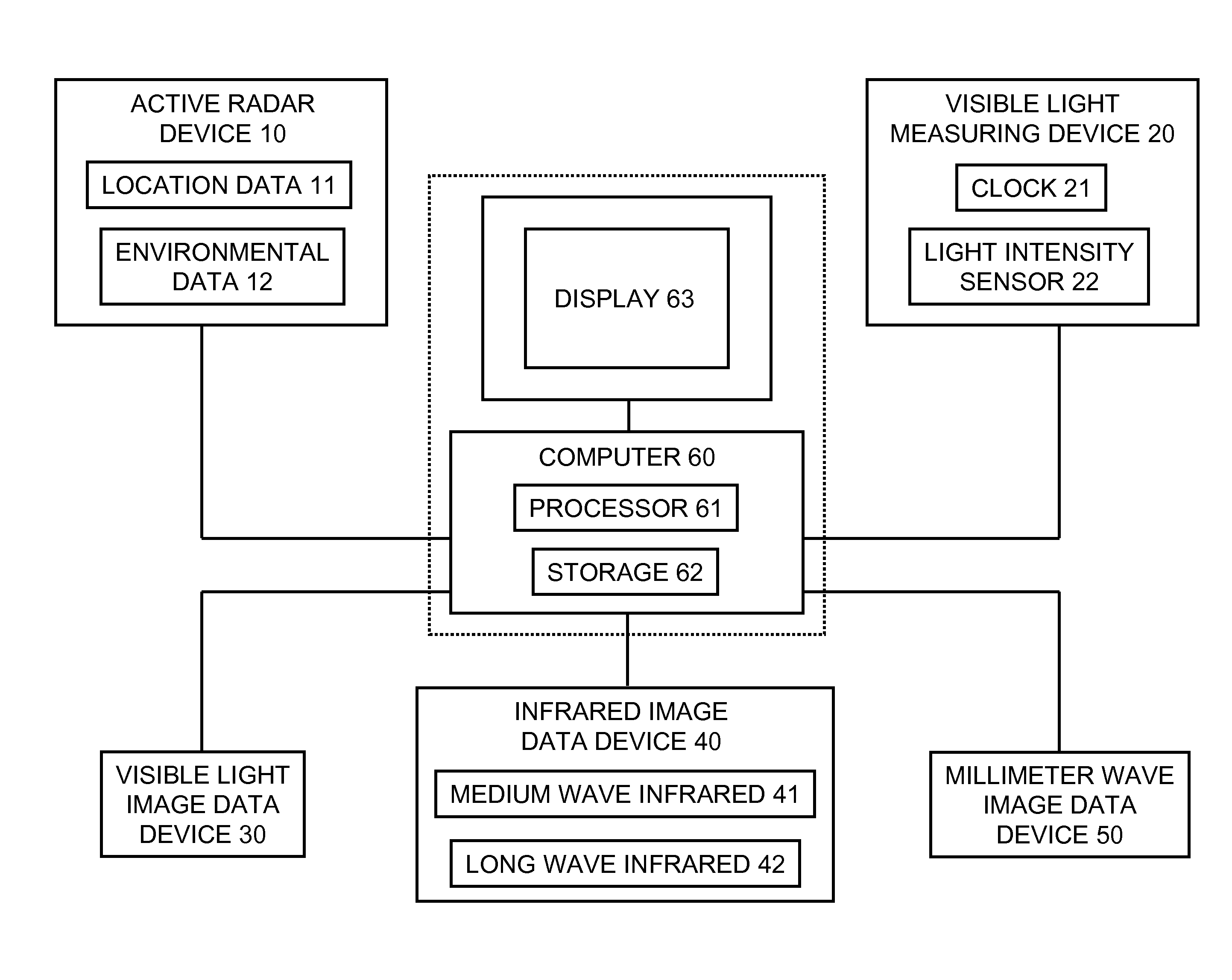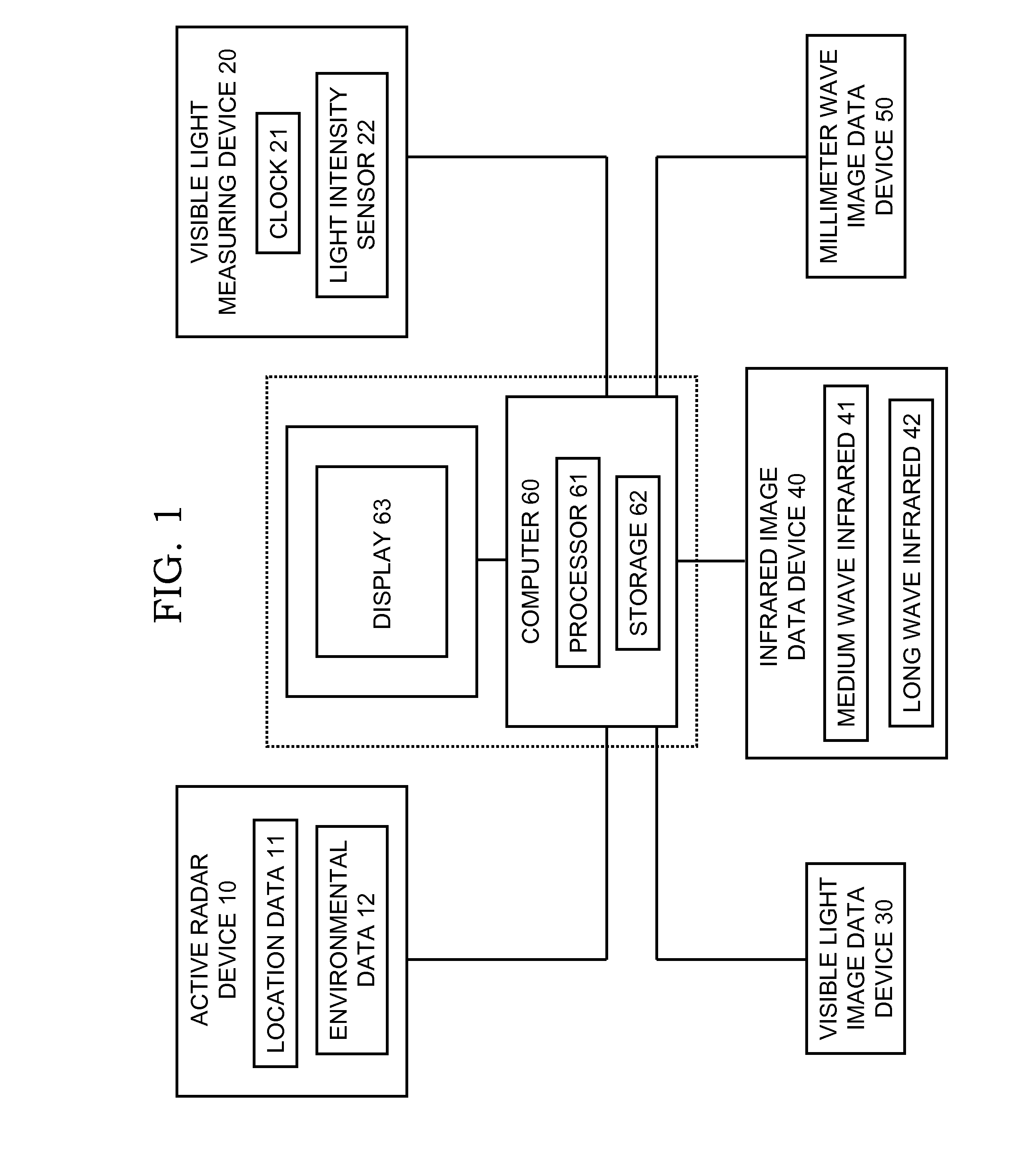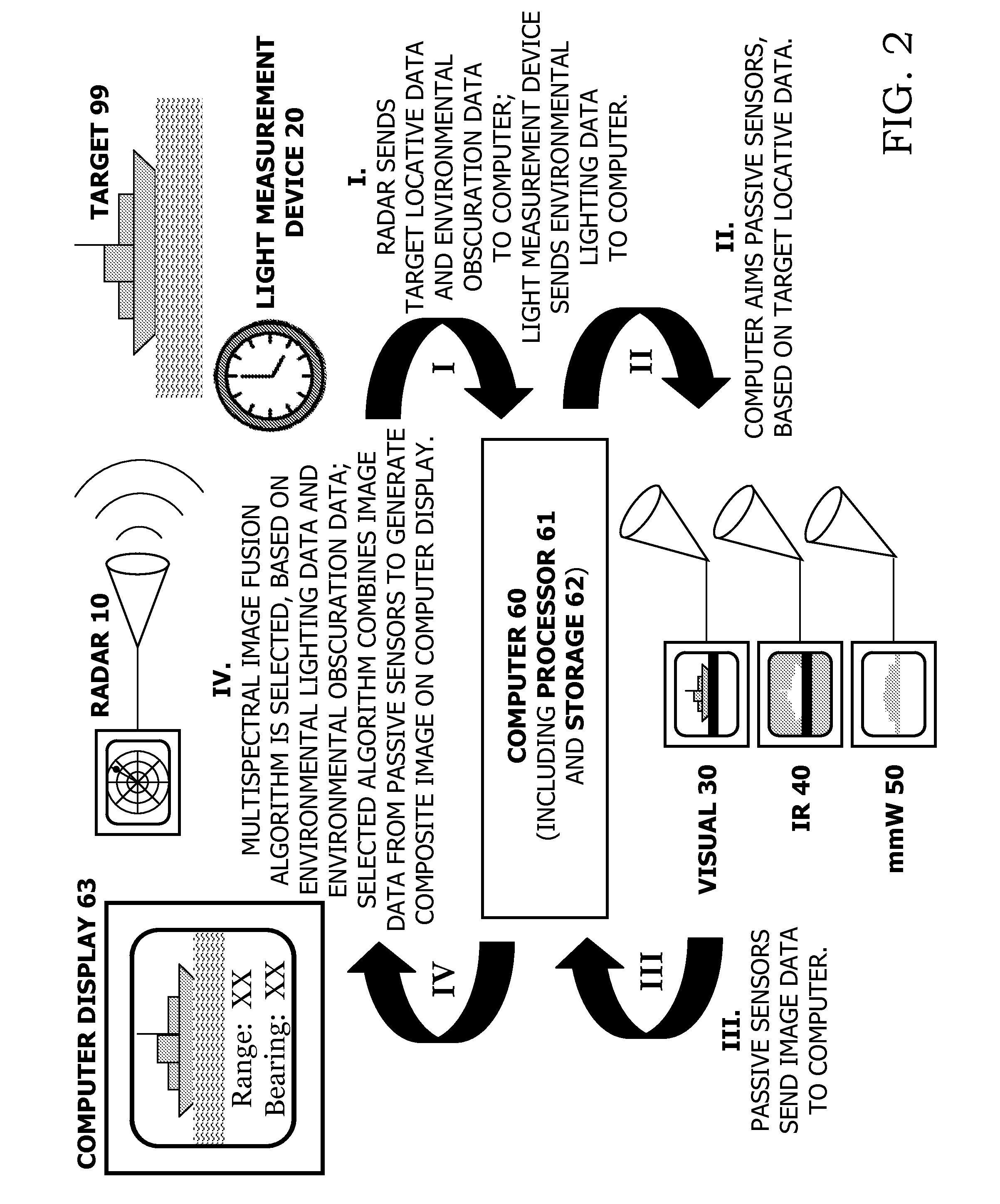Active-radar-assisted passive composite imagery for aiding navigation or detecting threats
- Summary
- Abstract
- Description
- Claims
- Application Information
AI Technical Summary
Benefits of technology
Problems solved by technology
Method used
Image
Examples
Embodiment Construction
[0041]Referring now to FIG. 1 through FIG. 4, computer 60 includes a processor 61 and memory / storage 62 (typically, both volatile and non-volatile) for holding and processing data and for running compute software, embodied in computer code. Computer 60 has resident in its memory / storage 62 an embodiment of an image fusion computer program in accordance with the present invention. Connected to computer 60 is display 63, on which are displayed the composite multispectral images generated by computer 60 in accordance with typical practice of the present invention.
[0042]The active radar device 10 includes a detection-and-tracking-type radar component 11 and a weather-type radar component 12. Light measurement device 20 is any suitable visual light-measuring means, such as including a clock (timekeeping instrument) 21 and / or a light meter (light sensing device) 22. The passive non-radar electromagnetic sensors include a visible light image data device 30, an infrared image data device 40...
PUM
 Login to View More
Login to View More Abstract
Description
Claims
Application Information
 Login to View More
Login to View More - R&D
- Intellectual Property
- Life Sciences
- Materials
- Tech Scout
- Unparalleled Data Quality
- Higher Quality Content
- 60% Fewer Hallucinations
Browse by: Latest US Patents, China's latest patents, Technical Efficacy Thesaurus, Application Domain, Technology Topic, Popular Technical Reports.
© 2025 PatSnap. All rights reserved.Legal|Privacy policy|Modern Slavery Act Transparency Statement|Sitemap|About US| Contact US: help@patsnap.com



